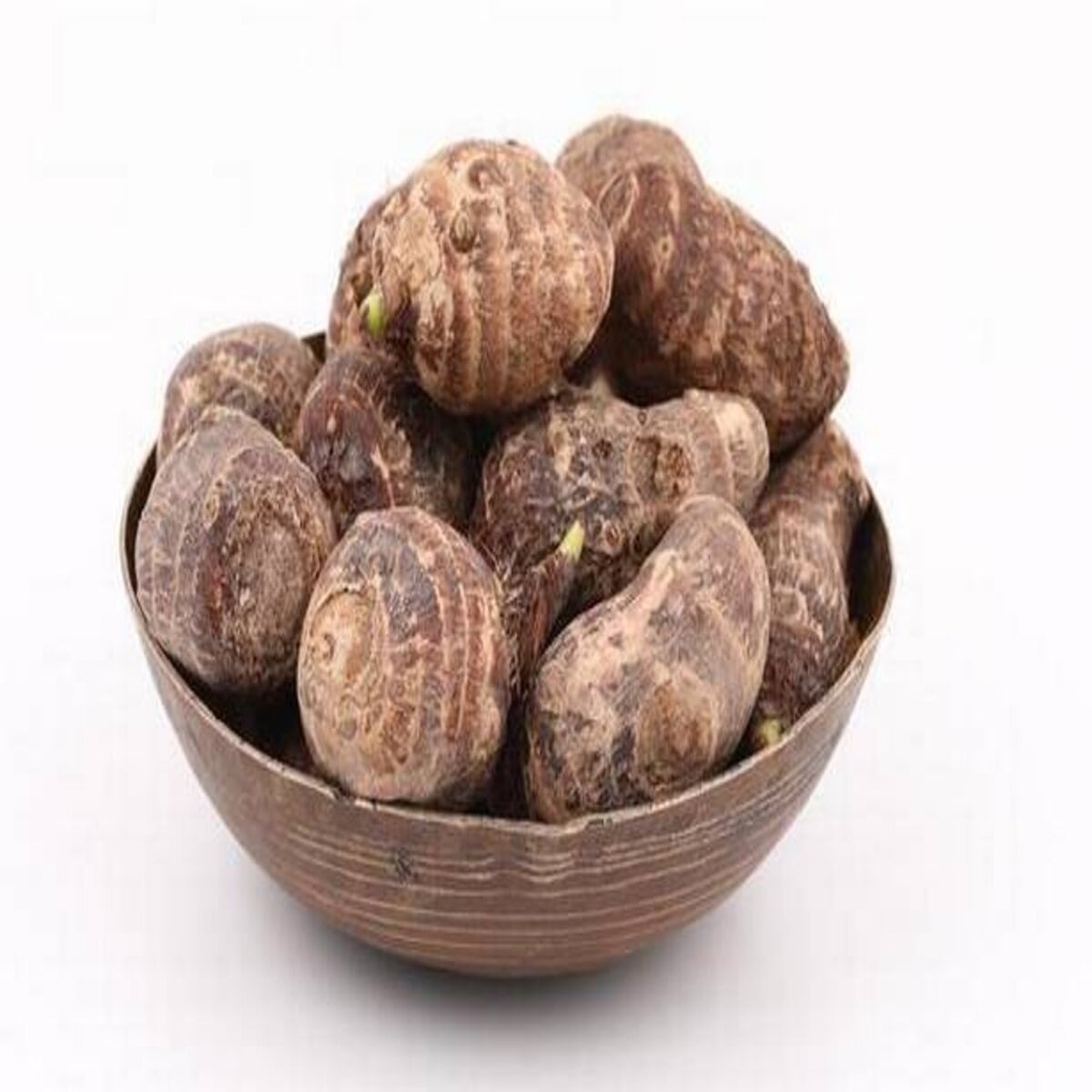Good Food Bar
Gathi Kochu / Taro Root / Gati kochu
Gathi Kochu / Taro Root / Gati kochu
Regular price
Rs. 269.00
Regular price
Rs. 399.00
Sale price
Rs. 269.00
Unit price
per
Couldn't load pickup availability
"Gathi kochu," also known as "taro root" or "colocasia," is a starchy tuberous vegetable that is widely consumed in various parts of the world, especially in tropical and subtropical regions. It is a member of the Araceae family and is botanically classified as Colocasia esculenta. The plant is known for its large, heart-shaped leaves and its edible underground corms or tubers.
Here is a description of gathi kochu:
1. Appearance: The gathi kochu plant typically stands about 2 to 3 feet tall and features large, arrow-shaped leaves that can grow up to 1 foot in length. The leaves are green and have prominent veins.
2. Tubers: The edible part of the gathi kochu plant is its underground corms or tubers. These tubers are irregularly shaped and covered with a rough, brownish skin. The flesh inside can vary in color from white to pale lavender or even purplish, depending on the variety.
3. Flavor and Texture: Gathi kochu has a mild, slightly nutty flavor when cooked. The texture is starchy and somewhat similar to potatoes, although it can be slightly slimy when overcooked.
4. Culinary Uses: Gathi kochu is a versatile ingredient in the kitchen and is used in a variety of culinary dishes around the world. It can be boiled, steamed, fried, or roasted. It's commonly used in curries, stews, soups, and side dishes. In some cuisines, it's also used to make chips or fritters.
5. Nutritional Value: Gathi kochu is a good source of carbohydrates and dietary fiber. It also contains vitamins and minerals, including vitamin C, vitamin A, potassium, and magnesium. However, it should be noted that gathi kochu contains oxalates, which can cause irritation in the mouth and throat if consumed raw.
6. Cooking Precautions: When preparing gathi kochu, it's important to peel and cook it thoroughly, as consuming it raw can be toxic due to the presence of calcium oxalate crystals. Boiling or cooking helps to break down these crystals and render the vegetable safe for consumption.
7. Varieties: There are many different varieties of gathi kochu grown around the world, each with its unique characteristics and culinary uses.
Gathi kochu is a valuable source of nutrition in many cuisines and can be used as a main ingredient in a wide range of dishes. It's appreciated for its ability to absorb flavors and is often used in savory dishes to provide a hearty and satisfying element.
Here is a description of gathi kochu:
1. Appearance: The gathi kochu plant typically stands about 2 to 3 feet tall and features large, arrow-shaped leaves that can grow up to 1 foot in length. The leaves are green and have prominent veins.
2. Tubers: The edible part of the gathi kochu plant is its underground corms or tubers. These tubers are irregularly shaped and covered with a rough, brownish skin. The flesh inside can vary in color from white to pale lavender or even purplish, depending on the variety.
3. Flavor and Texture: Gathi kochu has a mild, slightly nutty flavor when cooked. The texture is starchy and somewhat similar to potatoes, although it can be slightly slimy when overcooked.
4. Culinary Uses: Gathi kochu is a versatile ingredient in the kitchen and is used in a variety of culinary dishes around the world. It can be boiled, steamed, fried, or roasted. It's commonly used in curries, stews, soups, and side dishes. In some cuisines, it's also used to make chips or fritters.
5. Nutritional Value: Gathi kochu is a good source of carbohydrates and dietary fiber. It also contains vitamins and minerals, including vitamin C, vitamin A, potassium, and magnesium. However, it should be noted that gathi kochu contains oxalates, which can cause irritation in the mouth and throat if consumed raw.
6. Cooking Precautions: When preparing gathi kochu, it's important to peel and cook it thoroughly, as consuming it raw can be toxic due to the presence of calcium oxalate crystals. Boiling or cooking helps to break down these crystals and render the vegetable safe for consumption.
7. Varieties: There are many different varieties of gathi kochu grown around the world, each with its unique characteristics and culinary uses.
Gathi kochu is a valuable source of nutrition in many cuisines and can be used as a main ingredient in a wide range of dishes. It's appreciated for its ability to absorb flavors and is often used in savory dishes to provide a hearty and satisfying element.

